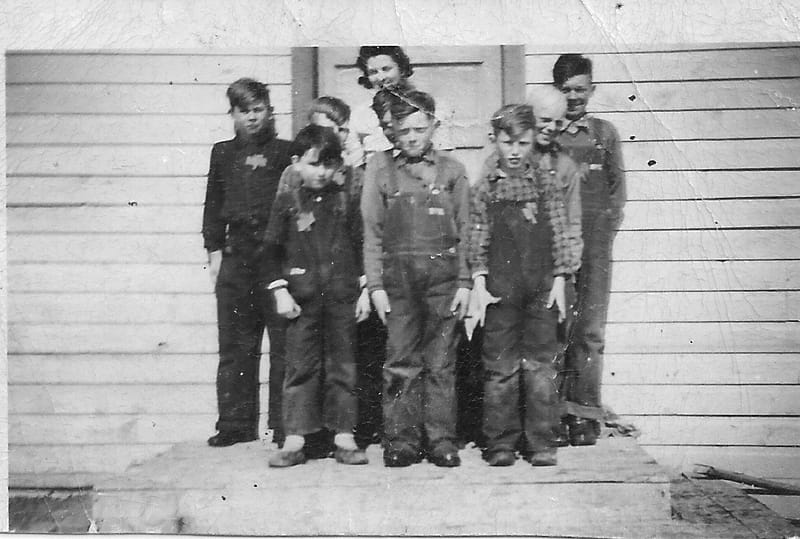CHAPTER 4
Teaching/Learning in the One-Room Country School
I attended Arden Leigh School for nine years (1943-52) and completed the grade one to eleven program. While grades 1-8 were taken as a part of the regular school program, my first three years of high school, grades nine to eleven, were by provincial correspondence courses. The process was to read the assigned readings, answer questions related to the readings and send the lessons to the Correspondence Branch in Regina for marking. During the three years of correspondence, I still attended the one-room school, but set my own pace with the teacher providing help when time permitted.
For the first three years of school we lived on the homestead so I had to walk three miles one way to school with my three older siblings. Since I was small for my age mum soon decided that for the few months of school I would take Wednesday off so I could rest up for the balance of the week. On a trial day of school on St. Patrick’s Day, March 17th, 1943 I had my picture taken for the first time.
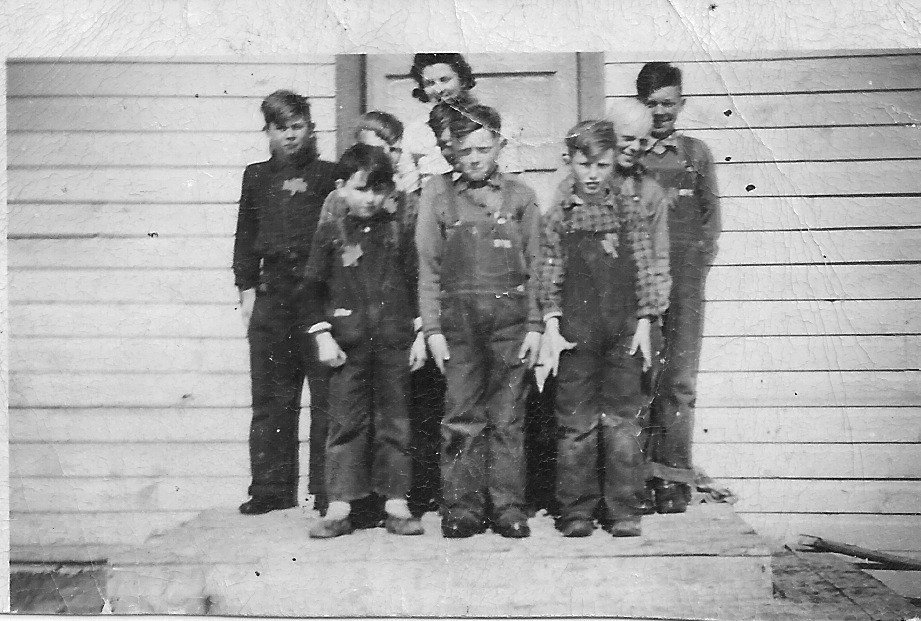
From left: George Chandler ,Bernie Chandler, Tommy White(hidden)
Teacher, Idamay Standish, Barry Cook(hidden),Dawn Cook,
Angus White ,Lorne Cook(born with no hair),Gordon Cook
Walking to school was not a lot of fun in the winter time, except after a snow storm when we could walk over 10 foot high snow banks, but summer was a different story. In the spring and fall we walked diagonally through the bush instead of following the L-shape of the road. I recall one morning specifically, May 24th, 1943, we met up with the Nystrom kids in the middle of the bush. They had exciting news-a baby sister, Elaine, had been born at their house that morning!
Edna Nystrom’s account of walking to school was not all bad:
”I remember starting school in Arden Leigh when I was about 8 years old. Almost every one walked to school in those days, the summers we enjoyed, never in a hurry and often getting to school late. The winters were not as nice, some days were pretty cold and it would always be dark when we left for school in the morning. However, we had a lot of holidays during the winter months. I often think of my school days, it brings back a lot of happy memories”.
Likewise, Elsie Gugin’s account of walking to school was very positive. “I always enjoyed our walk to and from school. In the spring the birds filled the air with pleasant sights and sounds. The cardinals with their beautiful colour, the cheerful robins, the red-winged blackbirds and the little wrens all left their pleasant memories”.
During our winter walk to school, the janitor (usually my grandfather) would have lit the fire in the pot-bellied stove and stoked it so by 9 am the school would be comfortably warm to greet the arrival of the students. The janitor also brought in enough wood to last the day as well as bucket of snow to melt on the stove for drinking water.
The students arrived and gathered around the heater to get warmed up. While in summer, the boys grabbed the softball and bat and headed out to the “ball diamond”. At 9 o’clock the teacher rang the bell and the day’s learning activities commenced.
The school day started with the singing of “O’ Canada” unaccompanied, while standing at attention with correct posture, “chin-up, chest out, shoulders back, stomach in and arms at the side”. This was followed by reciting the Lord’s prayer, a custom that continued in Alberta schools until at least 1967 when I was teaching there. At the end of the day we sometimes sang “God Saved the King”. After the opening rituals of singing and praying the teacher walked up and down the aisles to do the health inspection. She checked to see if your hands and face had been washed and asked whether you had brushed your teeth and checked to see that you had a clean handkerchief.
Teaching in a one-room school meant that the teacher had to be a wizard at planning; eight grades that took eight subjects each. The general modus operandi was to briefly assign students in a grade what was to be done, provide any explanation of the concept or topic and lastly assign an exercise from a textbook. Then move on to the next grade to do the same. One benefit of this system was that students became independent learners, an essential characteristic of lifelong learners.
Another strategy of these teachers was to have students teach other students which research tells us now is the most effective teaching method. If a student can teach others, it means that the concept being taught is reinforced in the student doing the teaching.
As a supplement to the teacher’s expertise there were school radio broadcasts primarily to enrich fine arts, particularly music. With a minimum of student preparation by the teacher, the students could follow the school radio broadcast. One enterprising teacher also used to have us dance to the music from the Temple Gardens broadcast over CHAB Moose Jaw. The desks were pushed aside and we danced for thirty minutes. While it was enjoyable at the time, I felt that it was a taking us away from serious studying, but in retrospect it really wasn’t because in many jurisdictions now dance is a mandatory part of the curriculum.
The one subject that was given the highest priority was reading. After the older students were given their assignment, the teacher devoted considerable time to reading in the primary and intermediate grades. And yes, we used the Dick and Jane Series; we learned phonics and every day we had to read out loud. Arithmetic included going to the blackboard to do questions given on the spot by the teacher. Also flash cards of addition, subtraction, division and multiplication facts were used regularly, often with pairs of students giving the questions to each other. It certainly meant that we became very adept at these arithmetic processes unlike today where most students have to rely on their fingers to get an answer.
Other activities used by teachers to enliven the day and hone skills was the spelling bee or geography match. In the spelling bee sides were chosen and the teacher gave words from the spelling textbook to the contestants. While in the geography match students had to give a place name starting with the last letter of the place name of the previous contestant.
One teacher, Mrs. Margaret Miller thrilled the whole class by taking them to her boarding place to listen to the radio on the coronation of George VI. Most families did not own a radio and here is one student’s account of that event. “Miss Margaret Millar was our second teacher. I recall the Coronation of King George VI. Miss Millar took all the students to Mr. and Mrs. Hemricks where she roomed, one and a half miles east, so that we could hear the Coronation ceremony. It was the first time I had ever heard a radio, a man on the other side of the ocean talking threw (sic) that wooden box, what a thrill for a ten year old!” (Marie Gugins)
Recess and noon hour were the best times when we created our own recreation. In spring, summer and fall there were at least two softball diamonds in operation, one for the younger and the other for the older students. In winter two games were very popular, Fox and Geese and Pom-Pom Pull Away.
Fox and Geese was played exclusively after a fresh snowfall. First you tramped out a circle in the snow, then made spokes so you ended up with a wheel. One person, the fox, was positioned at the centre of the wheel and the geese were all around the perimeter or on the spokes. The fox chased the geese and as soon as he touched one that person became the fox and the process was repeated.
Pom-Pom Pull Away, also called Redline, started by choosing up sides. The fastest runners (usually the bigger and older kids) got chosen first. Then the teams formed two parallel lines about 100 yards apart. The lines were simply marked in the snow or demarked by pieces of boards or horse turds.
The idea of the game was to take prisoners from the other team. It started by some people venturing out from the safety of their line. If they ventured too far or couldn’t outrun a person(s) from the other team and got touched, then they became a prisoner of the opposing team and had to stand at the end of the opposing team’s line. To get a prisoner out, one of your team members had to sneak up and touch the prisoner. While this was virtually impossible at first; soon the line of prisoners grew and by holding hands extended closer to your home line. At the end of noon hour, the team with the most prisoners won. Really everybody won because it was fantastic exercise.
The boys also played Mumble Peg. Mumble Peg required that each participant have a jack knife; one that had two blades that opened on the same end. The knife was then configured with the shorter blade pointing straight off the end and the larger blade perpendicular to the other. Then the longer blade was set in the ground and the idea was to flip the knife into the air with a quick movement of your index finger. If the knife stuck straight into the ground with only the shorter blade, you got 100 points; if it landed on both blades, you received 75 points; if it landed on only the longer blade 50 points and 25 points if it landed on the spine of the knife. There were no points if the knife flopped over on its side.
Each took turns and the first lad to get 500 points won and the one with the fewest lost. So why was it called Mumble Peg? Well, a peg about two and one-half inches long whittled out of wood was the other required piece of equipment. The winner then closed the blades of his knife, put the knife in his fist and with three strokes with the end of the knife pounded the peg as far as he could into the dirt. And guess who had to pull it out with their teeth, of course, the loser. What usually happened was that the older boys won and the younger boys lost so until you get a knack for the game, you “ate” a lot of dirt!
In my first few months at school from April to June, the older boys, including my older brother, George, (some of them 15 or 16 years old) decided that rather than play at noon that they were going to vandalize the barn and the school fence. The teacher was so exasperated that one day she asked all the boys to stay in after school. Of course, being a boy I stayed along with the other boys. Immediately, she ushered the younger boys out of the room. I believe some of the boys got strapped and that brought an end to the vandalism.
This reminds me of the first off-colour joke I ever heard, told by Sam Gugins to my brother, George, and me. A student by the fortunate name of Johnny Pool wrote on the blackboard at noon, “Johnny Pool has the biggest tool in the school.” The teacher kept Johnny in after school to deal with this situation while all of the other boys waited outside the school till he came out to see what his fate was. When Johnny came out he said, “Well, boys, it pays to advertise, but you’re got to have the goods!”
As November approached in each school year, the teacher began planning for the Christmas concert or Christmas tree as it was known. The teacher would have already gathered up books of plays and Christmas concert suggestions.
Each child had to be given a part in the concert because all the parents would be attending and a parent would not be impressed if their child was left out. There were plays, some of them had three acts. As well there were recitations, monologues and dialogues. There were drills and dances with music from a wind-up gramophone and, of course, Christmas songs. Some of the recitations were humorous while others told the serious Christmas story.
Practicing started in November and as time went on, there was less schooling and more and more practicing because teachers were also judged by parents on the quality of the concert.
There were decorations to make and costumes to prepare, often out of crepe paper while other kinds of paper were used to make tree ornaments. Either the older boys or a parent went into the woods and cut a spruce tree, which all of the students decorated a day or so before the evening of the concert. Some of the decorations had been purchased while many were hand made. The scariest of all decorations were clip-on candleholders for the tree. One year they actually lit the candles for a short time!
The concerts usually began at 7:00 pm with families arriving by horse and cutter, sleigh or caboose and since the barn would not hold all of the horses, they were merely unhitched and tied to the side of the outfit to munch on the hay brought for that purpose.
The program concluded with the whole school singing Christmas carols with the parents joining in. As these songs concluded, there was a jingling of bells outside and Santa Claus came bounding in with a “Ho, Ho, Ho, Merry Christmas boys and girls;” a few people got kisses. Then presents were passed out and every school and pre-school child received a bag of treats that always included an apple, an orange, mixed nuts in the shell and hard striped Christmas candy. A box of Japanese oranges was passed around for the adults. Santa left with a ’Merry Christmas to All’ and cocoa, coffee and lunch were served primarily to the adults who visited until about 10:30 pm when they bundled everyone up and headed home.
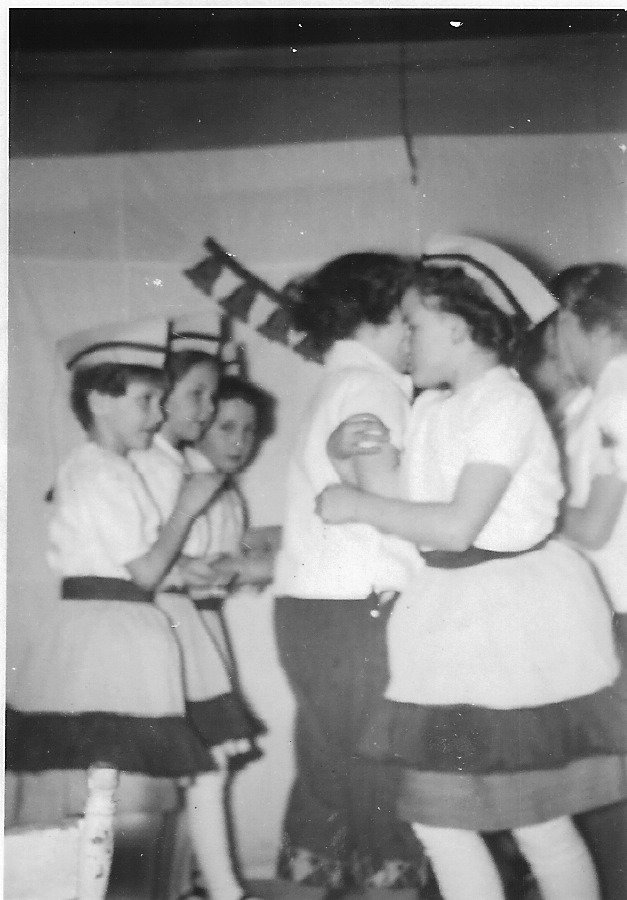
A Christmas concert drill featuring Susan Chandler, Geraldine Fenske, Shirley Clarke…
During the twenty years that Arden Leigh School operated twenty-two teachers were employed, some for periods as short as two months while four teachers, Betty Doull (1943-45), Everett Gerrard (1946-48), Dorothy Evans (1950-52) and I (1954-56 ) served for a full two years. The attached list names all of the teachers and where available, the years that they taught.
ARDEN LEIGH TEACHERS
March 4, 1935-June 30, 1956
Mrs. Finn Cook (March 4,1935)
Miss Margaret Miller
Miss Lena Merushechka
Mr. Onhausser
Miss Bowman
Miss Mary Ann Pinkerton
Mrs. McQuarrie
Miss Jean Anne Malenchuk
Miss Idamay Standish (1942 -43)
Miss Betty Doull (1943 -45)
Mr. Jake Woykin (September, 1945 to March 1946)
Mr. Larry Zbitnew (March – April, 1946)
Miss E. Wickenkamp (May-June, 1946)
Mr. Everett Gerrard (1946-48)
Mrs. F. Murrison (1948-49)
Miss E. Helen Schur (September-November, 1949)
Miss Thelma Rudachuk (November, 1949-April 1950)
Mr. Peter Bohurak (May-June, 1950)
Miss Dorothy Evans (1951-53)
Miss Muriel Plaskan (1953-54)
Mr. Bernard Chandler (1954-56)
THE TWO YEAR SERVICE GALLERY
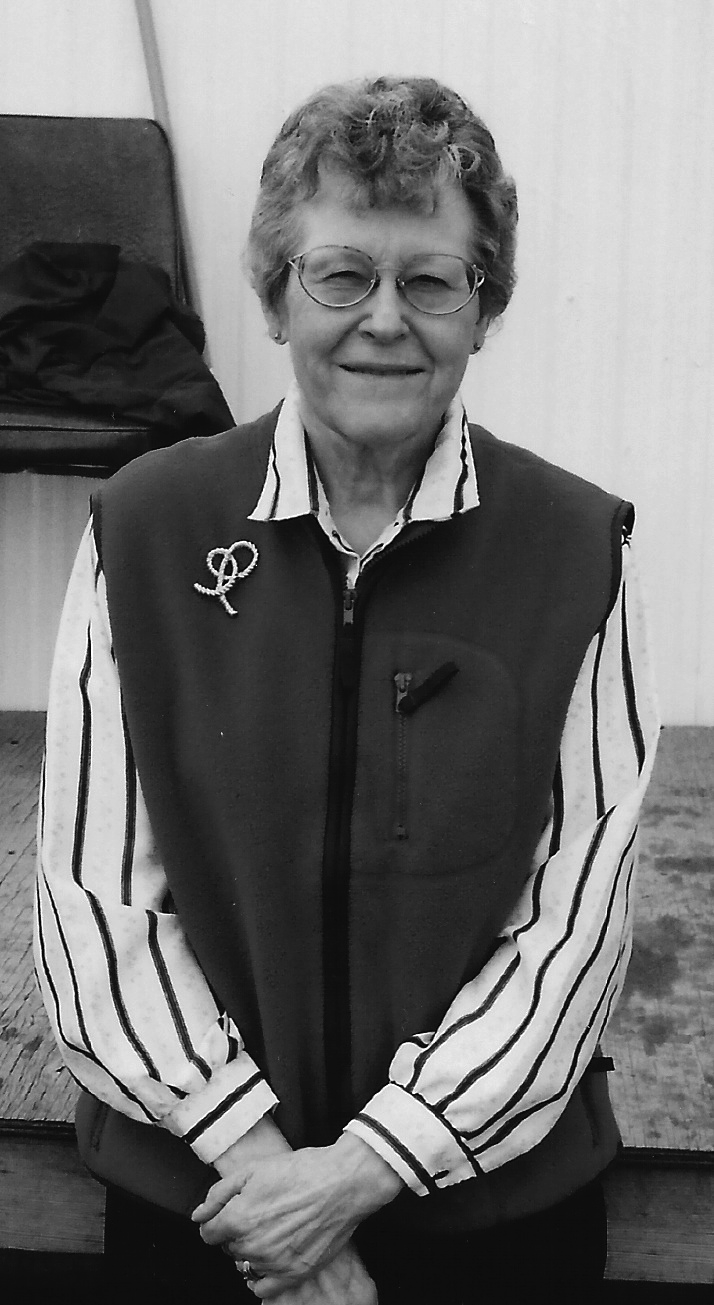 Miss Betty Doull (1943-45)
Miss Betty Doull (1943-45)
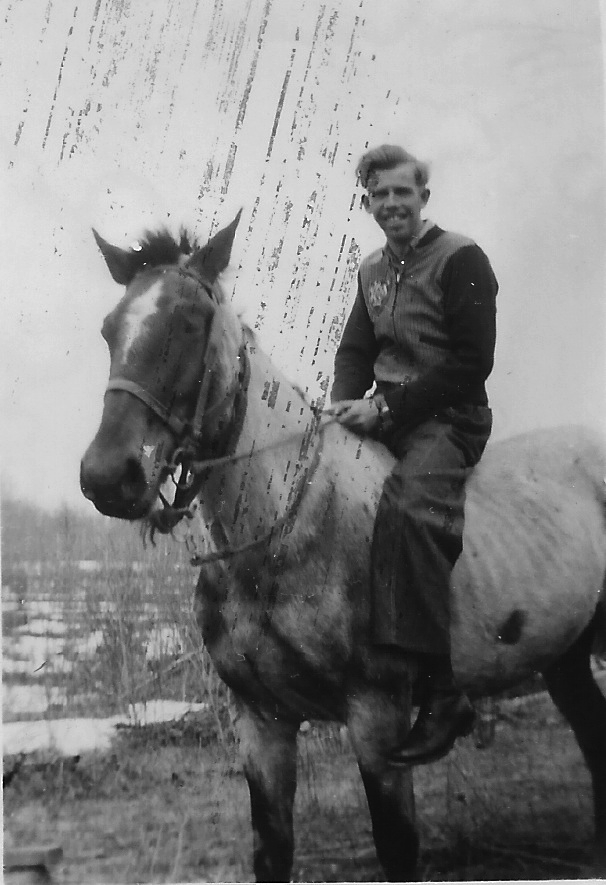 Everett Gerrard (1946-48)
Everett Gerrard (1946-48)
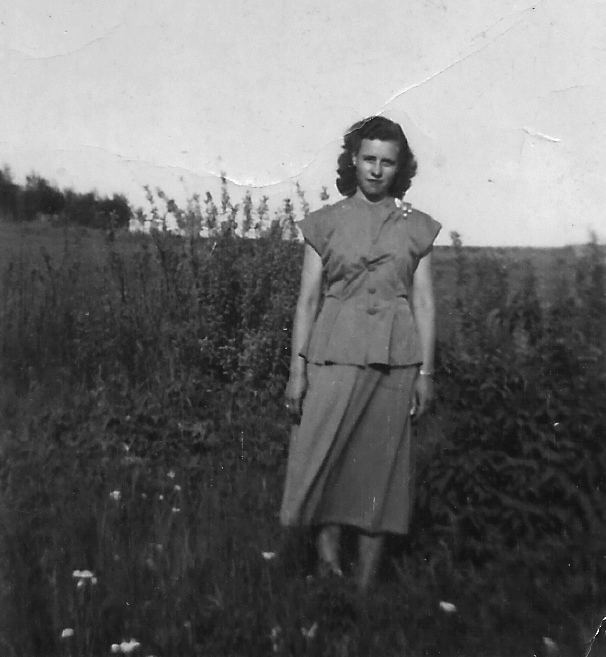 Dorothy Evans (1951-53)
Dorothy Evans (1951-53)
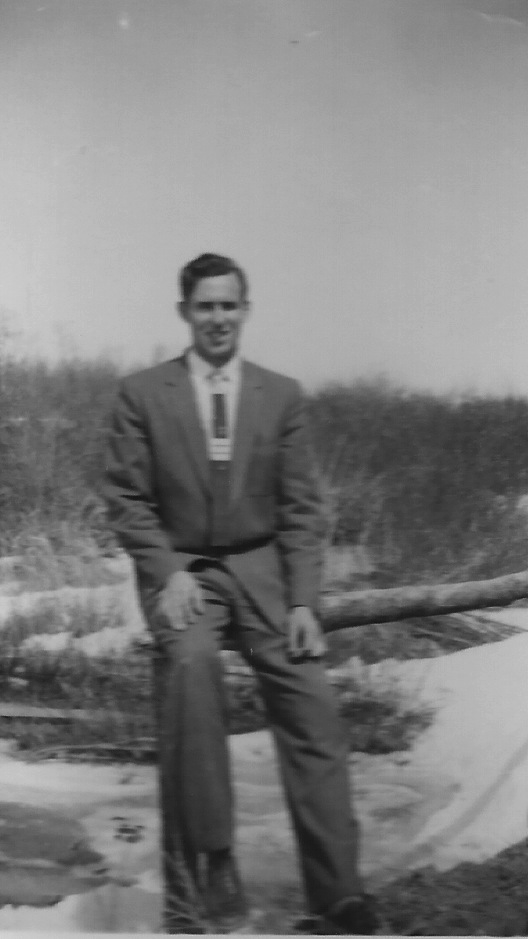
The school reached its highest enrolment of 26 in September, 1946 when my cousins briefly enrolled at the school. The first picture attached names the students that were enrolled in October 1946 while the second picture gives the enrolled students in 1948.
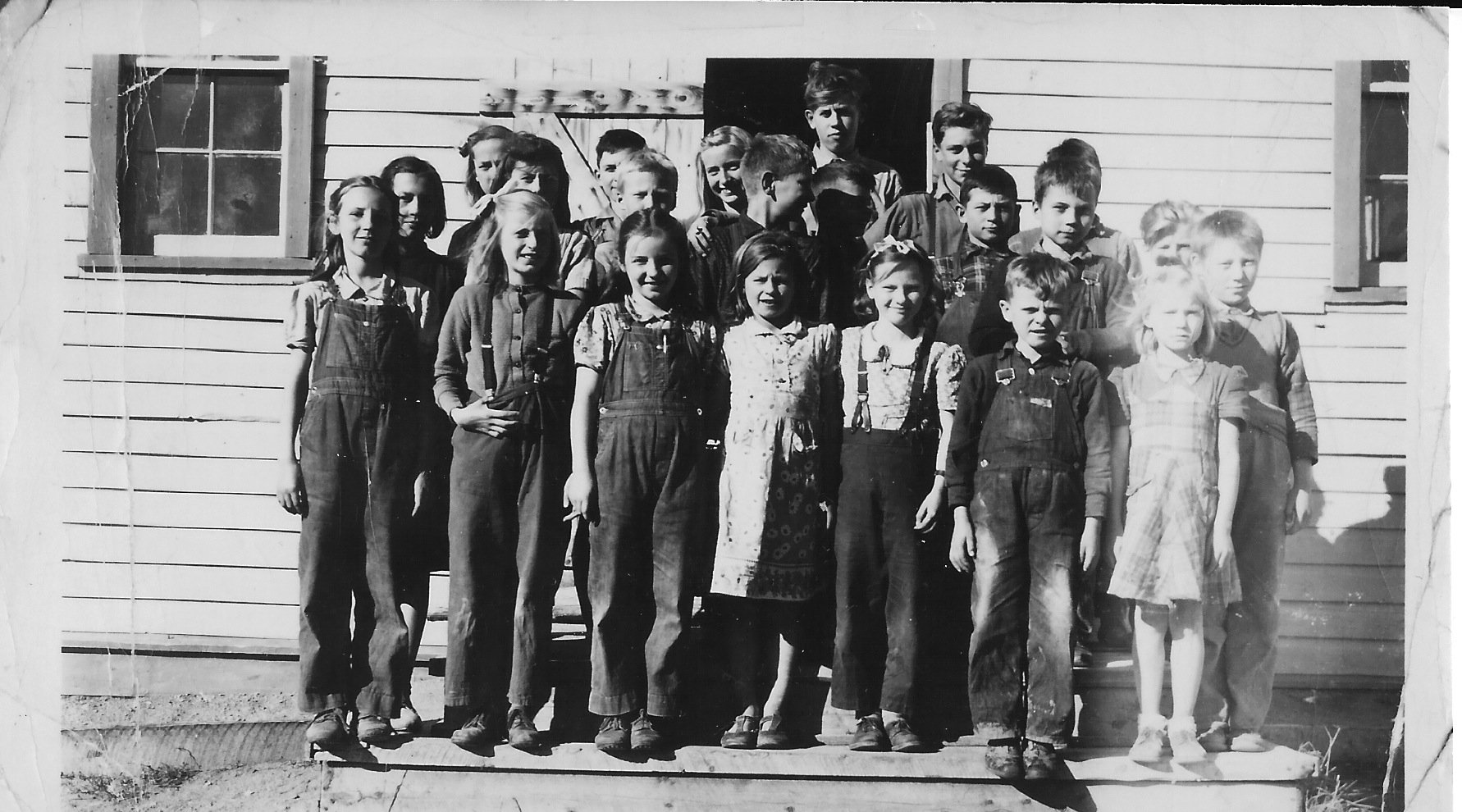
Back Row (L-R)
Elnor Cota, Bernie Chandler, Ruth Cota, George Chandler, Hubert Guy, Angus White
Middle Row (L-R)
Clara Chandler, Edna Sokolowski, Ervin Nystrom, Harry Rachkevich, David Sokolowski, Norman Byspalko, Oliver Gugins
Front Row (L-R)
Ruth Parry, Mildred Cota, Mildred Parry, Winnie Sokolowski, Florence White, Darrel Guy, Elma Nystrom
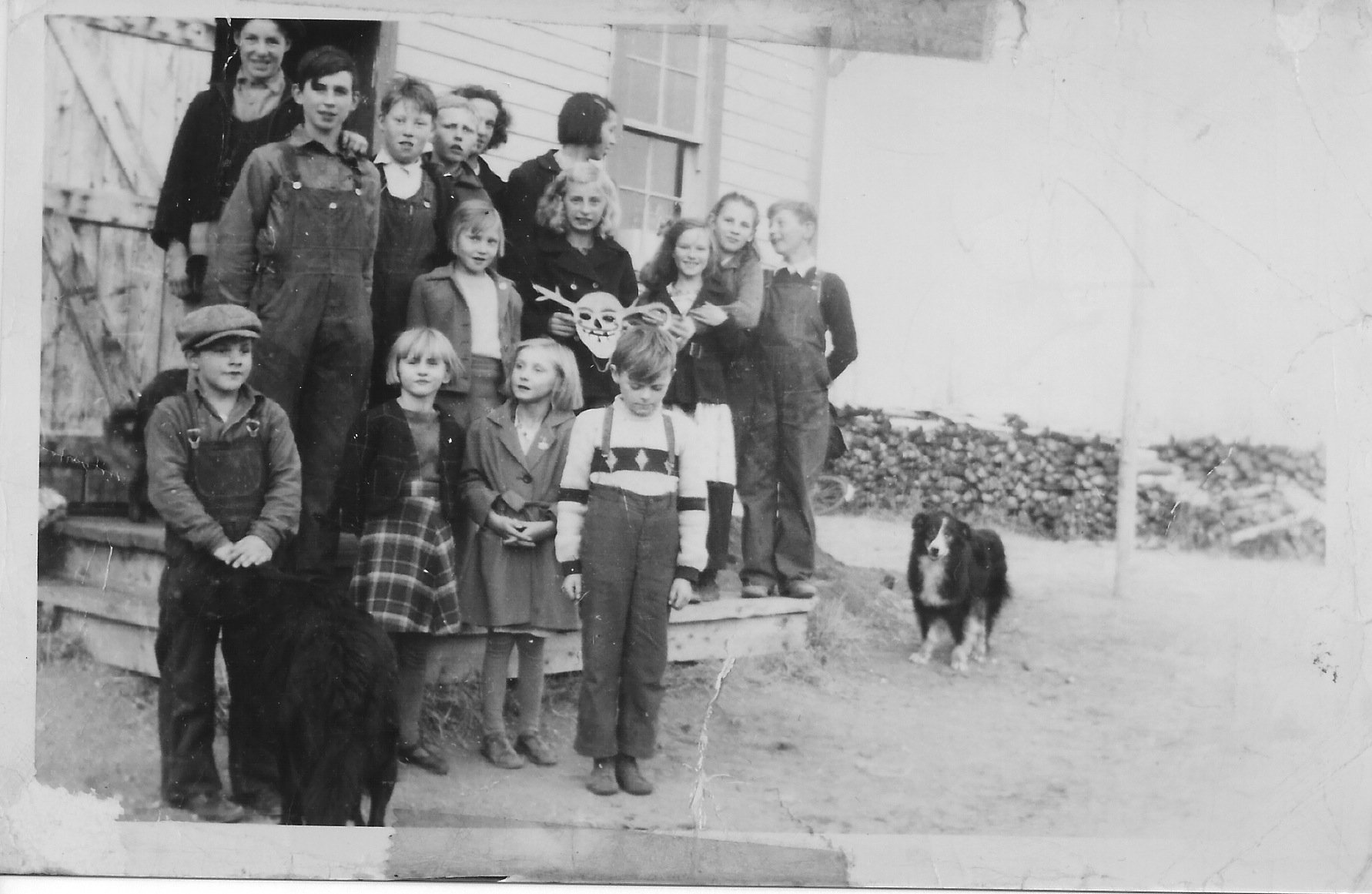
Back row
Alec Gugins, Bernie Chandler, Oliver Gugins, Ervin Nystrom, Elma Nystrom, Einor Cota, Mildred Cota, Clara Chandler, Florence White, Ruth Parry, Harry Rachkevich
In Front of Step
John Clark, Shirley Chandler, Marie Schnack, Darrel Guy
As I reflect on my review of the minutes and my association with the school, one main conclusion springs to mind. In the twenty years of operation of the school there was never an issue that divided the parents. Even the closure of the school and transport of the students to Stove Creek School didn't cause a ripple among the parents.
There were some disagreement over where the Christmas concert should be held in 1954. Some Arden Leigh parents, at a joint meeting with the Stove Creek school trustees, felt that if Arden Leigh hosted the concert then the school should be good enough to be "operated as a school afterward" ( H.W. Clark). After some discussion and diplomacy on the part of the Stove Creek trustees, John Fenske, Fred Fenske and Mike Delowski, the gathered parents agreed to the concert being held at Arden Leigh and the necessity to continue to transport Arden Leigh students to Stove Creek.
Instead they were fully cooperative and accepted the necessity resulting from the teacher shortage. The parents are to be commended for their commitment and support to any change which would result in improvement to education for their children
